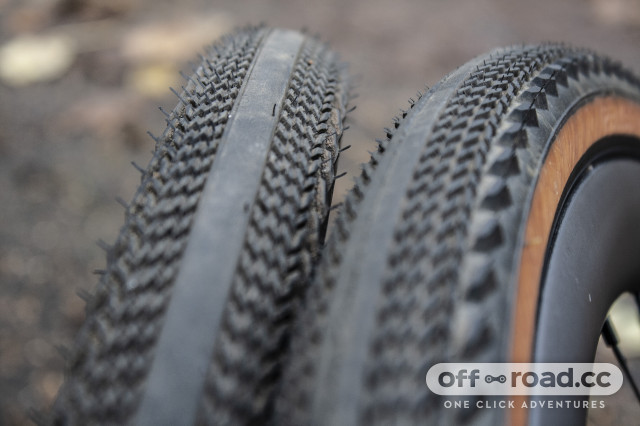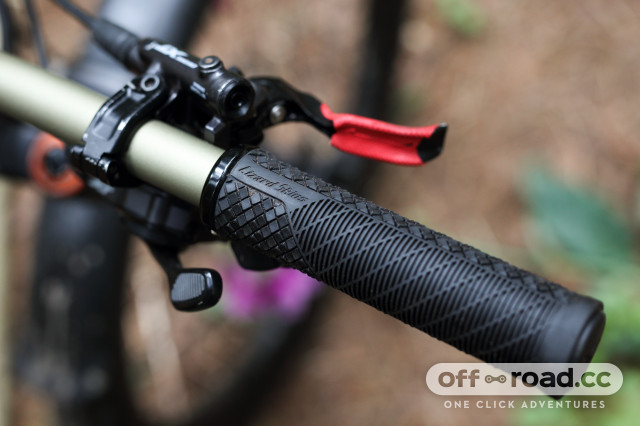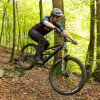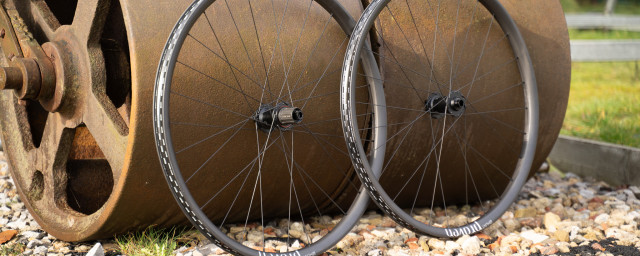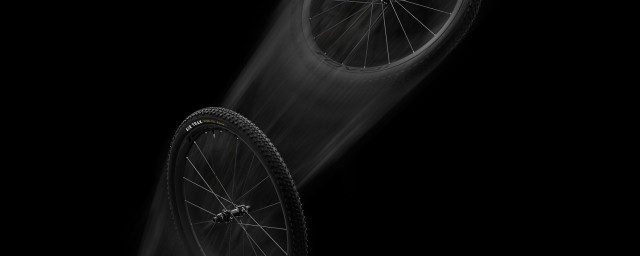5 best upgrades for your new mountain or gravel bike

You've saved up your hard-earned cash and finally bought yourself a brand-new mountain or gravel bike or both. While you can head straight for the trails, there's a range of upgrades that everyone should consider after buying a new bike. These may not be as fancy as a new set of wheels or sparkling drivetrain but they're all cost-effective, easy to install at home and they'll make your new bike even better.
- 13 of the best ways to attach gear to your mountain or gravel bike
- Nine cheapskate alternatives to proper cycling products
-
Trail Essentials - Kit to take on a mountain bike ride from the bare minimum to safety essentials
The tubeless tyre conversion
A lot of new bikes come with inner tubes installed and that's at almost any price but making the conversion to tubeless mountain bike tyres will result in the biggest improvement to the ride quality of your new bike with relatively little investment. Tubeless tyres offer more grip and less rolling resistance. They also hold up against punctures better while dropping the weight of those heavy inner tubes. For any off-road cyclist, converting your bike's tyres to tubeless should be at the very top of their list of upgrades.
For those new to cycling, or wrenching on their bikes, converting your tyres to a tubeless setup can be a daunting task but thankfully, a lot of new bikes have most of the conversion sorted for you. Often bikes come with pre-taped rims and tubeless-ready tyres. All you'll need to do is rip out the tubes, pour in some tyre sealant, and inflate.
While some level of tubeless readiness is commonplace these days on bikes above the £1k mark, it's important to check whether or not your rims and tyres are tubeless compatible. The latter is an easy upgrade that we'll talk about in a bit but if your rims aren't tubeless-ready, you'll need a new wheelset.
If your rims are already setup with rim tape and your bike has tubeless ready tyres, you'll just need to grab yourself a good tyre sealant and some tubeless valves (unless they're already in the box). These together should cost around £40.
New tyres: better grip and performance
Whether your new bike's tyres are tubeless ready or not, bikes are either specced with good all-round tyres, or OEM rubber that doesn't get the lovely soft rubber compounds and strengthy casings of their off-the-shelf counterparts. As such, a fresh set of tyres are a very worthy investment.
First off, if your bike's current tyres aren't tubeless ready, you'll have a very hard time converting them to tubeless. Tubeless ready tyres are an essential component in making the conversion.
And as mentioned before, many brands often slap on tyres that'll do well in a range of conditions but they may not be ideal for your riding and local terrain. If your favourite trails are soft or wet, you should consider looking for a more aggressive tread pattern but this will come with a penalty of increased rolling resistance, which will make pedalling a little tougher. If your trails are hard and dry, a less aggressive tread will decrease rolling resistance while offering more confident grip in those conditions.
It's also wise to consider the casing of your new tyres. Using single-ply casings will be lighter in weight but they're more likely to puncture and move laterally on the rim. Going for a heavier casing such as Maxxis' Double Down will offer more tyre support and puncture resistance but will come with an increased weight.
The best mountain bike tyres and the best gravel tyres can set you back from £40 to £80 per tyre.
Fresh grips or bar tape
Bar tape or grips are one of the most important contact points on the bike and like many things in cycling they're not a one size fits all component. Grips used on bikes with flat handlebars come in a range of shapes and sizes, as well as different rubber or foam compounds. The bar tape, used on drop handlebars comes in a range of materials, thicknesses and with, or without padding.
You grips are a vital interface in communicating trail feedback and how you feel the handlebar. Thinner grips or bar tape bring your hands closer to the bar, improving bar feel but can lead to painful arm pump as there's less material to dampen vibrations. A fatter grip will suit larger hands better and offer more damping. However, grip choice is down to rider preference.
As grips and tape come in so many varieties, finding the perfect grip for you is more a case of trial and error but this is something a trip to your local bike shop can help solve. Most grips come in packaging that allows you to give them a good feel so you can get a good idea of how they'll feel on your handlebar before you drop the cash. Bar tapes often come in packaging with a small sample on the outside or a little window where you can give it a preliminary feel. There are also some shops that set up sample tapes on handlebars.
Where sometimes cost relates to performance, that's not entirely the case as the best MTB grips or the best bar tape can cost as little as £18.
Get the right saddle
Whether you're a gravel, cross-country mountain biking, trail or enduro rider, you'll be spending a lot of time in the saddle and like grips, not every saddle suits everyone. Finding a saddle that fits you properly can feel like an absolute revelation if you've been riding the wrong saddle. It'll allow you to ride for longer without discomfort or eventual pain.
The correct saddle size depends on the width of your sit bones and it's actually very easy to measure. To do so, grab yourself a bit of cardboard and take off the outer layer to reveal the corrugated interior. Using a stool or hard surface, sit on the cardboard and circle the areas of flattened cardboard and measure the distance between the two. Add 25 to 30mm to that measurement and that's your sit bone measurement. When buying a saddle, buy one with as close to this final figure as you can.
Saddles come in a range of different builds utilising materials such as alloy, carbon fibre and titanium for their rails all of which have an effect on the weight of the saddle. With this, there's of course a huge price range to consider but the best saddles for MTB and gravel can be bought from £30.
Pedals
The third contact point is your pedals. Many bikes come with a set of pedals in the box but often these aren't up to the task. A good set of flat pedals will offer increased grip and durability while being easily serviced when the time comes.
Riders may want to change to clipless, or SPD pedals for greater security and better power transfer. However, SPD pedals require specific shoes with cleats in order to work, and while flat pedals can be ridden in any shoe, the best performance is achieved when using a cycling-specific flat pedal shoe.
Thankfully, (while you can) you don't need to spend an awful lot to get yourself a pair of good pedals and the boost in performance as a result will pay back in dividends. You can expect to pay from £30 for the best mountsain bike pedals.

